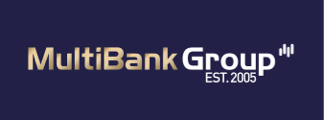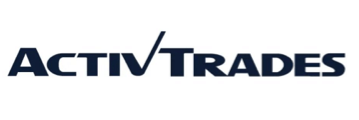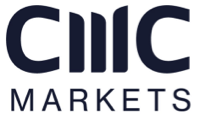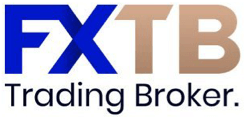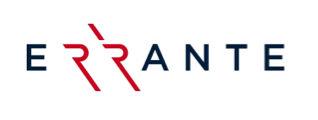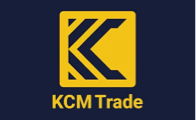eToro stands among the most recognized names in the global retail trading industry, known primarily for its social trading model and user-friendly ecosystem. Founded in 2007, the company pioneered the concept of copy trading—allowing users to mirror the strategies of other investors in real time. Over the years, eToro has evolved from a social investing startup into a multi-asset brokerage with tens of millions of users across more than 100 countries. Its mission remains to democratize access to financial markets through technology, transparency, and community-driven insight.

Between 60 to 80% of retail CFD accounts lose money.
| Regulators | FCA ASIC CySec FSAS |
|---|---|
| Minimum Deposit | $5 |
| Leverage | Between 1:1 and 1:30 | Payment Methods | Visa Mastercard Bank Transfer Sofort Neteller PayPall |
Across Asia, eToro attracts traders interested not only in traditional CFDs but also in real stock investing and cryptocurrency exposure. Its web-based interface simplifies portfolio management, while its social feed blurs the line between a broker and an educational network. The broker’s reach in the region continues to expand, supported by multilingual customer service, a rapidly growing content library, and the ability to fund accounts in various Asian currencies through cards, wallets, or local bank transfers.
While eToro’s simplicity appeals strongly to beginners, its execution quality and product variety also attract intermediate users who value efficiency and integrated portfolio management. For professionals, it functions more as a secondary venue—particularly for diversification into equities and crypto rather than high-frequency strategies. Overall, eToro’s presence in Asia aligns with the region’s growing demand for accessible, regulated, and transparent trading experiences.
eToro presents a distinct first impression—modern, visual, and centered on community rather than complexity. Its official website feels closer to a fintech platform than a traditional brokerage, with a focus on portfolios, market sentiment, and trending instruments. Navigation is simple, using large typography and iconography that guide users through assets, portfolios, and trader profiles. For newcomers, this visual orientation reduces intimidation, creating an intuitive environment for exploring trading and investment opportunities.
Account creation and access are streamlined. The onboarding process integrates social logins, making the initial experience similar to opening an app rather than a financial account. Within minutes, users can browse markets, simulate trades using virtual funds, and explore the “CopyTrader” feature that defines eToro’s ecosystem. These first steps communicate the platform’s core philosophy: accessibility first, sophistication later. For Asian users accustomed to mobile-first applications, this UX design resonates strongly with regional expectations of convenience and efficiency.
Another immediate impression is eToro’s transparency in layout. Key data—such as spreads, leverage limits, and market hours—appear contextually, reducing the need to navigate multiple pages. The integration of social metrics, like the number of copiers or average returns, introduces a layer of behavioral data that bridges trading and social analysis. For users who prefer structured research, the interface offers watchlists, sentiment scores, and news panels that adapt in real time.
Despite its simplicity, experienced traders will notice limitations early: the absence of MetaTrader or cTrader, and the broker’s preference for its proprietary web platform. While this may not satisfy algorithmic traders, it positions eToro as a distinct ecosystem rather than just another MT4 venue. Its design philosophy focuses on engagement and ease of use rather than raw configurability—an approach that defines both its success and its constraints.
Regulation
Regulation and safety form the structural backbone of eToro’s global presence. As one of the most widely recognized multi-asset trading platforms, eToro operates under an extensive regulatory framework that spans multiple continents, reflecting its commitment to investor protection and transparency. Rather than relying on a single jurisdiction, the broker has strategically established a network of regulated entities to serve clients across different regions with localized compliance and security standards. This multi-licensing model allows eToro to maintain consistent safety practices while adhering to the specific legal requirements of each financial authority.
Each eToro entity functions under strict oversight, combining institutional-grade compliance with technology-driven safeguards such as segregated client funds, data encryption, and two-factor authentication. The diversity of its regulatory coverage offers traders—particularly in Asia—confidence that their investments are handled within a globally recognized legal environment. Below is a summary of eToro’s regulatory landscape by region:
- United Kingdom (UK): eToro (UK) Ltd is authorised and regulated by the Financial Conduct Authority (FCA). eToro Money UK Ltd is also authorised by the FCA for the provision of electronic money and payment services. Crypto-asset activities in the UK are overseen under the FCA’s AML/CTF registration regime.
- European Union (EU): eToro (Europe) Ltd is authorised and regulated by the Cyprus Securities and Exchange Commission (CySEC). Additional EU registrations include the France AMF (Digital Asset Service Provider), the Spain CASP Register for virtual-asset providers, the Italy OAM (VASP registration), and cooperation with BaFin in Germany through a custody partner for selected services.
- Malta: eToro Money Malta Ltd is authorised and regulated by the Malta Financial Services Authority (MFSA) for the provision of electronic money and payment services.
- Middle East (UAE): eToro DMCC is authorised under the Abu Dhabi Global Market (ADGM) by the Financial Services Regulatory Authority (FSRA) to arrange deals in investments and provide related financial services.
- Australia: eToro AUS Capital Ltd is regulated by the Australian Securities & Investments Commission (ASIC) under an Australian Financial Services Licence (AFSL). eToro Asset Management (Australia) Pty Ltd operates as a Responsible Entity under the Corporations Act.
- Seychelles: eToro (Seychelles) Ltd is licensed by the Financial Services Authority (FSA) as a Securities Dealer under the Securities Act 2007, extending access to international clients outside stricter regulatory zones.
- Singapore: eToro Singapore Pte. Ltd. holds a Capital Markets Services Licence (CMSL) from the Monetary Authority of Singapore (MAS). Payments-related activities are governed under the MAS licensing framework for digital financial services.
- United States (USA): eToro USA LLC is registered with FinCEN as a Money Services Business (MSB). Securities are offered through eToro USA Securities Inc., a registered broker-dealer member of FINRA and SIPC.
- Gibraltar: The crypto wallet and custody service is provided by eToro X Limited (eToroX), authorised by the Gibraltar Financial Services Commission (GFSC) as a Distributed Ledger Technology (DLT) provider.
This broad regulatory matrix ensures that eToro’s operational practices comply with high global standards for transparency, client protection, and financial reporting. Under these frameworks, client funds are held in segregated accounts with tier-one banks, separate from company capital, and the firm undergoes periodic audits to verify compliance with solvency and security protocols. Compensation schemes such as the UK’s FSCS and the EU’s ICF offer additional protection in the event of institutional failure.
For Asian traders, this global regulatory coverage provides tangible reassurance. While eToro operates under MAS oversight in Singapore, promotional materials and digital advertisements are not directly reviewed by the authority—a disclosure consistent with Singaporean law. Nevertheless, the presence of top-tier regulation across Europe, Australia, and the Middle East means that investors from Asia are effectively covered under a comprehensive international compliance umbrella.
In conclusion, eToro’s safety and regulation infrastructure reflects a mature, transparent, and proactive compliance culture. The combination of multi-jurisdictional supervision, robust data protection policies, and industry-standard financial safeguards positions the broker as one of the most secure trading venues available to global retail traders. For those in Asia seeking reliability and international credibility, eToro provides both—anchored by consistent regulation and operational integrity across every market it serves.
Account Opening
Opening an account with eToro is a straightforward process designed to minimize barriers for new traders. The registration workflow is entirely digital and can be completed within minutes through the official website or mobile app. Users start by entering basic personal information and verifying their email address. From there, the system guides applicants through a structured identity check that includes uploading a government-issued ID and proof of address. The verification typically completes within 24 hours, thanks to eToro’s automated compliance systems.
What differentiates eToro’s onboarding process from many other brokers is its hybrid structure: new users can explore the full platform immediately using a virtual portfolio funded with simulated capital, even before completing verification. This trial mode allows beginners to understand platform mechanics, risk management, and position sizing without financial exposure. It’s a practical educational step that particularly benefits Asian users who value experiential learning before committing funds.
Funding options are diverse and adapted to regional preferences. Traders can deposit using credit or debit cards, PayPal, Skrill, Neteller, or direct bank transfers. In many Asian jurisdictions, eToro also supports localized payment gateways and multi-currency wallets, which reduce conversion friction. Minimum deposits vary depending on location, typically starting from around USD 50 to 200, allowing wide accessibility. Withdrawals are processed quickly—usually within one to two business days—and transparency is maintained by listing all applicable fees upfront.
Once verified, clients gain access to a personalized dashboard showing portfolio value, performance analytics, and community interactions. Unlike traditional brokers that separate trading from education, eToro merges these elements, enabling users to view what other investors are trading, follow their strategies, and even replicate them automatically. This social element distinguishes the onboarding experience by making trading feel collaborative rather than isolating—a design choice that resonates well in collectivist cultures across Asia.
Account Types
Unlike brokers offering multiple segmented accounts, eToro operates under a unified account model. Every user gains access to the same core features: real-time trading, copy trading, and investing in a broad selection of CFDs and real assets. The account structure is simple—there is one standard live account, supplemented by a demo mode and an exclusive Club membership program for high-balance clients. This straightforward setup eliminates confusion and standardizes the trading experience across global regions.
The single-account approach ensures pricing transparency and operational consistency. All users trade under identical execution conditions and leverage limits, which vary based on regulatory jurisdiction. Retail clients in the EU and UK are limited to a maximum of 1:30 leverage on major forex pairs, while international users can access higher ratios up to 1:400. This regulatory segmentation protects less experienced investors while maintaining flexibility for professional accounts where allowed.
eToro also features its “Club” program—a tiered system that rewards larger account balances with additional benefits such as dedicated account managers, reduced withdrawal fees, exclusive webinars, and access to premium research. These perks do not alter trading conditions but enhance client experience through service differentiation. The absence of multiple account types simplifies compliance and reduces the likelihood of clients selecting unsuitable leverage or fee structures.
This uniform model may feel restrictive for professional traders seeking raw pricing or alternative commission setups, but for the majority of retail users, it creates clarity. The consistency of trading parameters ensures that performance comparisons between accounts remain valid—a valuable feature for copy trading transparency, as all users operate under the same cost framework.
Platforms
eToro’s proprietary web-based platform is the cornerstone of its ecosystem, combining social features, trading tools, and portfolio management in one interface. It eliminates the need for third-party software, appealing to traders who prefer simplicity and visual design over complex configuration. The layout presents live charts, trending instruments, and community insights side by side, making it easy to follow both market data and peer sentiment simultaneously. For traders across Asia who rely on mobile access, eToro’s platform is fully responsive, ensuring a consistent experience across desktops, tablets, and smartphones.
In addition to the core web platform, eToro offers a mobile app that mirrors the desktop interface, allowing users to monitor and execute trades seamlessly. The app supports real-time notifications, watchlists, and integrated news feeds, which are particularly useful for active traders during the Asian sessions. Its cloud synchronization ensures that preferences, alerts, and positions remain consistent across devices—an essential feature for users operating across multiple time zones.
Charting capabilities, while simpler than those of MetaTrader, are sufficient for most discretionary strategies. The platform includes multiple chart types, drawing tools, and technical indicators such as moving averages, RSI, and MACD. Order types include market, limit, stop-loss, and take-profit, with the ability to set trailing stops. Execution speeds are competitive, and order routing transparency ensures no manual dealer intervention.
For traders seeking automation or external integrations, eToro’s ecosystem may appear limited, as it does not support algorithmic trading or third-party bots. However, this gap is compensated by its CopyTrader functionality—a system that automates portfolio replication from top-performing investors. This innovation transforms the platform into a social-investment network, where learning, performance benchmarking, and diversification happen organically through community interaction.
Assets
eToro provides access to a diversified selection of assets, including forex, commodities, indices, stocks, ETFs, and cryptocurrencies. The broker’s hybrid model—offering both CFD trading and direct investment—allows users to switch between speculative and long-term investing approaches without leaving the platform. For Asian traders, this versatility means exposure to global markets while retaining control over position types and leverage usage.
Available Assets
Below you can see which assets are available for trading with eToro:
| Asset | Availability |
|---|---|
| Currencies | 60 |
| Real Stocks | ✓ |
| Stock CFDs | ✓ |
| Commodities | ✓ |
| Indices | ✓ |
| Real ETFs | ✓ |
| ETFs CFDs | ✓ |
| Futures | ✗ |
| Options | ✗ |
| Bonds | ✗ |
| Cryptocurrency CFDs | ✓ |
| Real Cryptocurrencies | ✓ |
*Availability of certain assets may vary based on account type, platform, or region.
Forex trading includes major, minor, and several emerging-market pairs relevant to Asia such as USD/JPY, AUD/SGD, and NZD/USD. Commodity CFDs cover metals, energies, and agricultural goods, while indices include both regional benchmarks (Nikkei 225, Hang Seng) and global leaders (S&P 500, NASDAQ, DAX). Real stock trading—available in selected jurisdictions—enables users to own shares commission-free, a major appeal for investors seeking portfolio diversification. ETF access mirrors this functionality, offering exposure to sector-based and thematic funds without derivatives.
The cryptocurrency offering remains one of eToro’s highlights. Users can trade or invest directly in assets like Bitcoin, Ethereum, and XRP, or gain exposure through crypto-asset portfolios curated by experts. This inclusion appeals particularly to Asian retail investors, where digital assets form a rapidly expanding part of financial participation. The broker’s regulated crypto operations under European and Australian entities provide added legitimacy in a space often associated with volatility and regulatory uncertainty.
Overall, eToro’s asset variety emphasizes accessibility rather than depth. It is not a niche FX broker but a universal gateway for diversified exposure, aligning with Asian traders’ growing interest in multi-asset investing under one platform.
Spreads
Spreads represent one of the most important cost factors in trading, and eToro maintains a transparent structure designed to be easily understood by both new and experienced traders. The broker operates with variable spreads that reflect real market conditions rather than fixed pricing. This means the difference between bid and ask prices fluctuates in response to liquidity, volatility, and the underlying asset’s activity level. Such a model provides a realistic trading environment that mirrors institutional market behavior, especially during high-volume sessions in Asia such as the Tokyo and Sydney opens.
Spreads Offered
Below a visual representation of eToro's spreads across several currency pairs:
*Spreads are variable and may change based on market conditions, account types and trading volumes.
On major forex pairs, eToro’s spreads are generally competitive compared to other global brokers. For instance, EUR/USD and USD/JPY often trade within a range of 1.0 to 1.5 pips under normal market conditions. More volatile pairs like GBP/JPY or exotic Asian crosses may show wider spreads, reflecting their lower liquidity. Unlike brokers offering raw interbank spreads plus commissions, eToro uses an all-inclusive pricing model where no separate trading commission is charged; all trading costs are already integrated into the spread. This approach offers simplicity and predictability—qualities that many retail traders in Asia appreciate when calculating trade entries, stop-losses, and position sizes.
Beyond forex, eToro applies differentiated spreads to its wide range of CFDs on stocks, indices, commodities, and cryptocurrencies. Stock CFD spreads typically start from 0.09% per side of the trade value, depending on the specific market and liquidity levels. Indices such as the S&P 500 and NASDAQ 100 can average between 0.75 and 1.0 points, while commodities like gold and crude oil fluctuate according to global volatility. For crypto-assets such as Bitcoin and Ethereum, spreads are usually wider—often between 0.75% and 1.0%—reflecting the higher risk and decentralized liquidity in those markets. These variable rates ensure that traders always experience live market pricing rather than artificially fixed quotes.
During Asian market hours, spreads may slightly widen due to lower liquidity compared to London or New York sessions; however, eToro’s deep global liquidity network minimizes these variations. The broker aggregates pricing from multiple liquidity providers, ensuring that spreads remain tight and stable even during off-peak periods. For traders based in Singapore, Malaysia, or the Philippines, this consistency provides a major advantage, allowing for accurate risk management and reduced slippage. The absence of requotes further strengthens execution reliability—once an order is placed, it is filled at the best available market price. Ultimately, eToro’s spread model prioritizes transparency, fairness, and accessibility, ensuring that traders can focus on market analysis rather than worrying about hidden trading costs.
Other Trading Costs
Beyond spreads and commissions, eToro applies a number of secondary fees that traders should understand when evaluating total trading costs. These include charges for inactivity, withdrawals, currency conversions, and overnight financing (swaps) on leveraged positions. While these are not unusual in the industry, their impact depends on trading frequency and asset type. For long-term investors who trade occasionally, inactivity fees may be more relevant, while short-term traders are typically more affected by swap and conversion rates.
Inactivity fees are charged when an account remains dormant for 12 consecutive months. The cost is USD 10 per month, automatically deducted from available equity until activity resumes. Although this fee does not apply to open positions or demo accounts, it can accumulate over time if a trader fully steps away from the platform. The rationale behind this charge is administrative, designed to cover account maintenance and regulatory obligations for inactive clients.
Withdrawals are subject to a flat USD 5 fee per transaction, and the minimum withdrawal amount is USD 30. Additionally, eToro processes all transactions in U.S. dollars, which means users depositing or withdrawing in another currency may incur conversion charges. The currency conversion rate varies depending on the payment provider but generally falls between 50 and 150 basis points. For traders outside the U.S., particularly those in Asia-Pacific regions using SGD, MYR, or JPY, these costs should be factored into profit calculations.
Finally, traders using leveraged positions—such as CFDs on forex, indices, or commodities—will encounter overnight financing costs, also known as swaps. These rates fluctuate based on the underlying asset, prevailing interest rate differentials, and the direction of the trade (long or short). eToro displays applicable swap rates directly in the trading window for transparency. Understanding these secondary costs is essential for active traders who maintain positions overnight or across market sessions, as they can meaningfully influence net profitability over time.
Trading Conditions
eToro provides flexible but regulated trading conditions tailored to investor profiles under each jurisdiction. Leverage levels depend on the entity: up to 1:30 for retail clients under EU and UK regulations, and up to 1:400 for professional or offshore accounts. Margin requirements adjust automatically according to asset volatility, and stop-out protection ensures that losses cannot exceed account equity—an important safeguard for less experienced traders.
Execution follows a market model without dealing desk intervention. Orders are filled directly against aggregated liquidity sources, minimizing slippage. The platform also integrates real-time sentiment data and transparency reports that show popular instruments, average holding durations, and global trading behavior. These analytics provide valuable insight for Asian traders seeking to understand crowd positioning before entering trades.
Risk management tools include adjustable leverage settings, negative balance protection, and automatic stop-loss implementation. The broker also supports partial position closures, allowing users to take incremental profits or limit exposure. This flexibility caters to both day traders and investors building long-term portfolios within the same account.
Operationally, trading hours align with global markets, covering the full Asian session and continuous trading for cryptocurrencies. Combined with strong server infrastructure, eToro ensures uptime stability during regional data releases and volatile periods. For traders across Singapore, Malaysia, or Hong Kong, this consistency helps maintain strategic continuity without unexpected disruptions.
Is eToro a Good Option for Asian Traders?
eToro’s model aligns well with Asia’s evolving trading culture. Its focus on accessibility, education, and community engagement matches the region’s demographic of emerging retail investors seeking social learning and mobile-based solutions. The ability to observe and replicate top performers helps shorten the learning curve for beginners, while the multi-asset offering enables diversification without complex setups.
From a regulatory standpoint, Asian traders benefit indirectly from eToro’s oversight by top-tier bodies, though direct local regulation (such as MAS licensing) remains limited. Nonetheless, the broker’s adherence to global standards provides sufficient confidence for users in jurisdictions where local equivalents are not available. The inclusion of localized payment gateways and multilingual support further enhances regional relevance.
Customer service responsiveness is strong, with multilingual live chat and knowledge base support accessible across time zones. Educational content, including webinars and video tutorials, is tailored to non-Western audiences and emphasizes practical examples over theory. These localized adaptations make eToro not just available, but approachable for the average Asian trader.
In short, eToro suits individuals prioritizing simplicity, transparency, and community learning over raw technical execution. It is not a platform for professional algorithmic traders but serves as a well-regulated, user-friendly gateway into the broader world of global investing.
Our Verdict
eToro’s ecosystem represents a bridge between traditional trading and social investing. Its greatest strength lies in accessibility—an interface that removes friction for newcomers without sacrificing essential risk controls. While the single-account model lacks the granularity desired by professionals, it standardizes pricing and user experience, ensuring fairness across its vast client base.
For Asian traders, eToro delivers a credible and convenient option for diversified trading and investing. Its regulatory framework, operational transparency, and emphasis on education provide a secure foundation for long-term participation. The inclusion of crypto and real equities alongside CFDs offers balance between speculation and investment, appealing to the region’s growing hybrid-investor demographic.
However, eToro’s platform limitations—no MetaTrader, no algorithmic trading, and fixed spreads—may deter highly technical users. Those seeking deep execution control or raw liquidity access will find better fits elsewhere. Yet for most retail traders, these trade-offs are minor compared to the benefits of usability and trust.
Ultimately, eToro stands as a modern brokerage adapted for the digital investor era. Its commitment to social engagement, education, and regulatory compliance positions it as a relevant, reliable choice for traders across Asia seeking simplicity backed by institutional integrity.
Frequently Asked Questions
Is eToro regulated in Singapore?
Yes, eToro Singapore Pte. Ltd. holds a Capital Markets Services Licence (CMSL) from the Monetary Authority of Singapore (MAS), which authorizes it to provide capital market products and related services. However, in line with MAS regulations, eToro clarifies that promotional materials and advertising content have not been reviewed by the Authority. This disclosure reflects Singapore’s transparency framework and ensures that investors understand the limitations of marketing oversight while maintaining operational legitimacy under MAS supervision.
What types of accounts does eToro offer?
eToro offers three main account types designed to accommodate different trader profiles. The Personal (Retail) Account provides access to all available assets, including stocks, crypto, and ETFs, under standard leverage and full consumer protection. The Professional Account allows experienced traders to request higher leverage after meeting specific eligibility criteria defined by the broker. Finally, the Corporate Account serves businesses or institutional entities trading on behalf of legal organizations. All users, regardless of account type, can access eToro’s demo portfolio to practice with virtual funds risk-free.
What is the minimum deposit required to start trading?
eToro does not enforce a uniform global minimum deposit, as requirements depend on jurisdiction and payment method. In most regions, clients can begin trading with as little as USD 10–50. For Professional or Corporate accounts, larger amounts may be required, depending on the entity’s risk assessment and capital adequacy verification. The absence of a fixed high threshold makes eToro accessible to retail traders while maintaining strong compliance standards for larger accounts.
Does eToro support MetaTrader or other external platforms?
No, eToro does not support MetaTrader 4 or 5. Instead, it operates on its proprietary platform designed for multi-asset access and integrated social trading features. This system enables users to trade directly, copy other investors, and manage diversified portfolios from a single interface. The platform includes charting tools, algorithmic functionalities, and real-time sentiment indicators, providing an all-in-one ecosystem for both discretionary and automated trading approaches.
How does eToro protect client funds?
Client protection at eToro is multi-layered. All customer funds are held in segregated accounts with reputable global banks, ensuring that operational and client capital remain completely separate. eToro entities operating under FCA, CySEC, and ASIC are also subject to periodic audits, capital adequacy requirements, and investor compensation schemes such as the FSCS in the UK or the ICF in Europe. Additionally, user accounts benefit from two-factor authentication (2FA) and advanced encryption protocols that safeguard both data and transactions from unauthorized access.
Can traders in Asia access eToro 24/7?
Yes. eToro’s infrastructure is designed to support continuous global trading, including the full range of Asian market hours. Traders can access the platform during Tokyo, Singapore, and Sydney sessions, executing trades across Forex, indices, commodities, and cryptocurrencies. The broker’s servers and support systems operate continuously, allowing users to manage positions, monitor risk, and follow global market movements in real time. For regional clients, this ensures seamless participation in both Asian and overlapping Western trading windows.
Note: Any opinions expressed in this article are not to be considered investment advice and are solely those of the authors. Singapore Forex Club is not responsible for any financial decisions based on this article's contents. Readers may use this data for information and educational purposes only.







